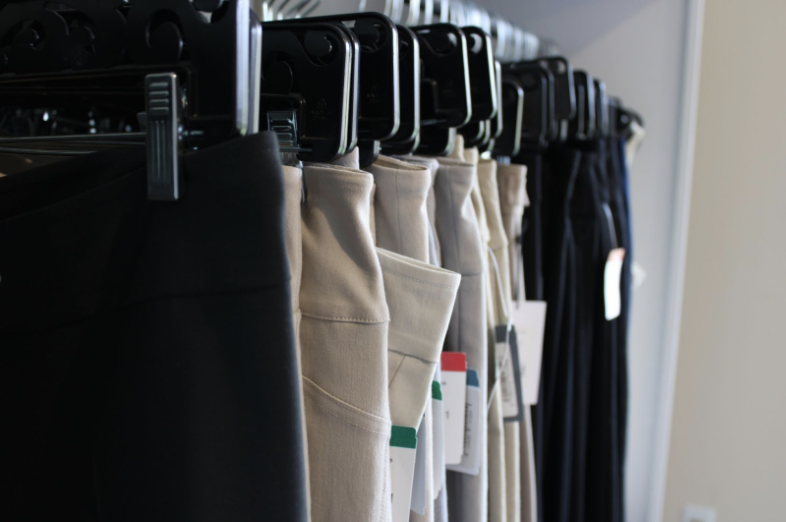Even in the beginning of COVID — when the future of non-essential businesses felt dismal because they didn’t know if they’d ever reopen — Meryl Henrici, the owner of Flirt in Hamden, had people contributing to her small boutique anyway.
“I had so many people buy gift cards and they didn’t know whether I was going to reopen or not,” Henrici said. “They just had faith and it was a great source of comfort and it did help getting in that income, but it touched me because I did [reopen], but they didn’t know that.”
On March 25, 2020, Connecticut had 38 new cases of COVID and, as of April 26, 2021, there are still 665 cases with a daily average of 259, according to the state of Connecticut. The greater New Haven area also continues to report rising cases, mounting up to 88,766 cases and 2,059 deaths since the pandemic got a foothold in the U.S.
Flirt is a boutique located on 3551 Whitney Ave. in Hamden, which has been named Best Hip Boutique in Connecticut by Connecticut Magazine five years in a row. Flirt sells from a vast catalog of clothing, which ranges from black tie and homecoming events to the perfect laid-back vacation outfit.

While the fashion industry wasn’t the only thing that took a hard hit, small boutique owners are still dealing with the repercussions of the lockdown, even after the state of Connecticut said they could reopen doors almost a year ago. No matter how well people followed the Centers for Disease Control and Prevention (CDC) guidelines, all businesses needed to close March 23, 2020 at 8 p.m.
The hitch? Small business owners were shutting the doors without knowing when — or if — they’d be allowed to reopen.
“I would come here and look at my store filled with merchandise” when the store was closed, Henrici said, adding she would ask herself how to maneuver next. Thankfully, FaceTiming and staying in contact with her clients through social media really helped in the early summer months from May to June 2020.

Super soft and unique face mask options available at Flirt 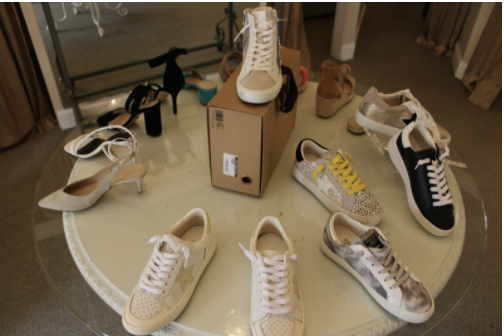
Shoe selection: from heels to sneakers at Flirt
The management team at Flirt also moved cautiously, Henrici said, booking shoppers by appointment because they “were scared to death of too many people.”
“It felt like a top-notch New York City restaurant making bookings because we were running out of times,” Henrici added.
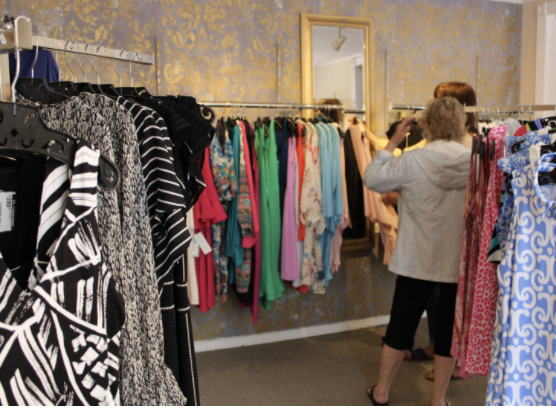
Although Flirt closed last year on March 16 and opened a bit later than other businesses, Uptown Consignment owners waited to close until the last day, March 23, and opened the first day they could: May 20, 2020.
Uptown is a consignment shop north of Flirt at 4137 Whitney Ave., on the way towards Cheshire. The small store offers not only clothes to local shoppers, but shoes and toys as well. Those wanting to donate lightly used or older clothes can do so in the back of the store.
As soon as it reopened, fans of Uptown flooded back into the local clothing hotspot, said manager Ashley Williamson.

“When we reopened, consignors and customers came right back,” Williamson said, adding she does feel business has picked up as the vaccine became more readily available.
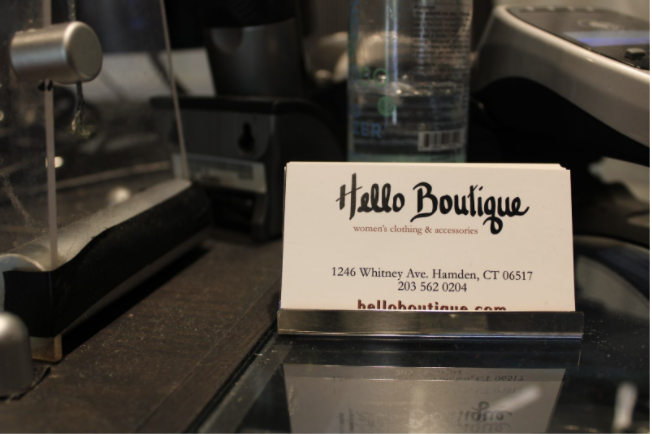
Taryn Allison, director at Hello Boutique, a third clothing boutique also located on Whitney Avenue, said business is not only back to normal, but booming. She credits it to the warmer weather and the vaccine availability in Connecticut as the shop continues to follow CDC guidelines.
“We do see more folks walking about the area, and will get some increased foot traffic,” Allison said. “I think people are happy to get out and about a little more and give themselves a little time to poke around their favorite local shops and see some happy faces.”
The vaccine also helped bring business back in the door at Flirt.
“I would say 95% of my clients have either had one or two [vaccines], and they’re not really that worried about it,” Henrici said.
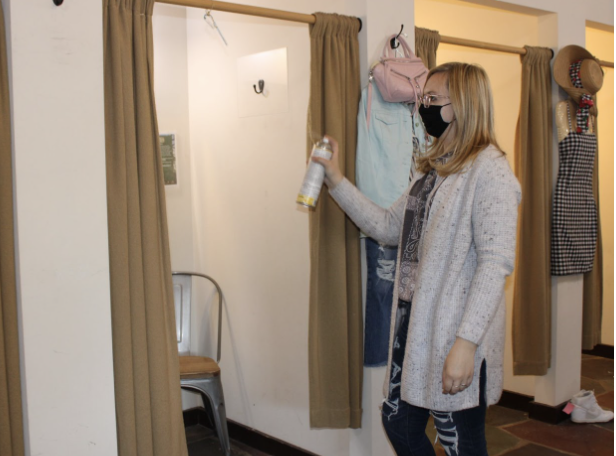
The role of social media
Small boutiques are back open. Yet, with the restraints of lockdown in 2020, local businesses quickly realized it became imperative they integrate social media into the business plan.
Take Rachel’s Room, for example, a digital-only small business. Run by Rachel Molotsky, a 20-year-old Quinnipiac sophomore physical therapy major from Cherry Hill, New Jersey, Rachel’s Room sells custom-designed clothes and stickers. She has been running her business for almost three years.
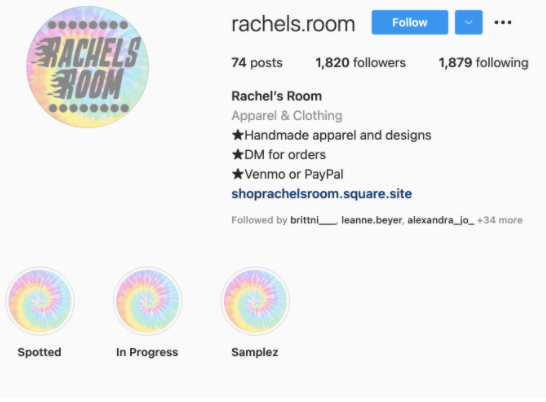
Although Molotsky never needed to close her business to fit COVID restrictions, she quickly realized she needed to keep her social media skills up to date to keep clients coming back, bringing in new people to buy her products. The digital platform her brand was built on, like Instagram, was something Molotsky could use to her advantage.
This social media takeover was something most small businesses adapted to all over the country, specifically if they wanted to keep customers interested in their clothing lines. Henrici became her own influencer to show what her business had to offer, also modeling it in real-time for her clients.
Like Flirt, Williamson said a lot of people managed to pull together and support Uptown, despite the shutdown, adding it helped the company initiate an email and texting program with over 10,000 customers in their system to keep in contact.

Unlike other local businesses, Molotsky said she “felt relieved” when COVID hit because she knew her audiences were never coming into a physical store. Even prior to the pandemic, she used Instagram to get her point across to buyers that her designs are “really cool” and cheaper than the bigger companies.
“Since a lot of people were stress shopping it kind of helped my business,” Molotsky said. “I had new orders every single day and it was really shocking to go from a small business to being nationwide.”
Like Molotsky, Hello Boutique already had a large Instagram presence since they have been in business for 40 years. Allison said online shopping was already a part of Hello’s strategy, but added it never hurts to up your social game.
“We’ve had the website going for many years prior, as well as our social media,” said Allison. “We definitely gave our social posts a boost in frequency and creativity, and from that saw an uptick in followers and engagement.”
The rise in social media use didn’t take place in just Hamden. The statistics for the global trend speak for themselves, according to Dave Chaffey at Smart Insights, who found Facebook was actually the most used out of all social platforms during COVID, and Instagram ranked fifth, despite it working better for Henrici.
“I started putting myself on Instagram, which I never liked to do before,” Henrici said. “But people seem to like it, and it worked. Even now Instagram is really big for us.”
Shopping: To be digital or not to be digital
Although the COVID-19 pandemic affected small businesses, shoppers also pivot and explore new ways of purchasing the clothes and products they needed and wanted.
“When COVID first hit, I did more online shopping and would drive past Marshalls and T.J. Maxx to see when they reopened and maybe go to stores I normally would not because they were open,” Hamden resident Joy Shorey, 21, said.

In addition to online shopping, Sally Nunnally, a modern language teacher from New Haven said curbside pickup and delivery became essential when the pandemic first hit — and even going late into last year.
“I haven’t shopped all that much; it’s only maybe since the new year that I’ve been going back into these small businesses,” Nunnally said.
Nunnally said “It was a bit odd to jump back in,” adding she was “really out of the habit of shopping” and she didn’t return until the COVID positivity rate started falling.
Larger businesses adopted curbside pick-up and delivery, such as markets and liquor stores.
And although many people changed their shopping habits, some people still waited for these small and big businesses to open back up so they could get back to in-person shopping.
Jordan Shaw, 22, from Wallingford, said she still went back into stores after they opened, ensuring she wore a good mask and she stayed six feet apart from other shoppers.
“I don’t do a ton of online shopping because I just can’t find the stuff I’m looking for, so going out is just easier,” Shaw said.
West Haven resident Kaitlyn Lindberg, 21, said she went back into the shopping world earlier because she works at American Eagle in the Connecticut Post Mall in Milford. Yet, if not for the job, she may not have felt comfortable returning to in-person stores.
“I have never really been a fan of online shopping because I like to see it on myself so shopping hauls didn’t really change my mind because I don’t really buy anything online since I can’t see it in person,” Lindberg said.
Changing strategies in a business isn’t easy, said Alex Miner, director of business development for Building Resources in Los Angeles. While he works for a larger-scale business, he said he knows how well smaller businesses are battling it out with their larger competitor retailers. It’s the heart and dedication that keeps them going.
“I think there’s something so admirable and so genuine about being a small business and not shifting your values,” said Miner.
A helpful hand: PPP loans
According to the U.S. Small Business Administration, “the Paycheck Protection Program (PPP) is a loan designed to provide a direct incentive for small businesses to keep their workers on payroll.” The loans will be offered until May 31, 2021.
Flirt and Hello Boutique were two local businesses to accept PPP loans, which helped them pay their staff and ease the burden of rent.

“I was able to get the PPP loan, which was monumental for me, because I have a great team of ladies that worked for me,” Henrici said. “And they were with me before. They stayed with me during it, and they’re here with me today.”
For Connecticut, the average amount for PPP loans taken out was $103,952. On the lower side of the loan, Flirt took out $34,791 and Idiom Inc. in New Haven took $19,000. The highest amount listed was from Hello Boutique taking out $100,293.
But it wasn’t only small businesses that needed financial help when the pandemic went into full effect.
Major retail chain Ann Taylor opened its first location in 1954 in New Haven to sell clothes to New England women. However, shocked by COVID, Ann Taylor, closed its Chapel Street location after filing for bankruptcy.
Although Ann Taylor had to close, 71% of fashion experts expect there will be 20% or more growth for online businesses by the end of 2021. Three out of 10 of these people agree seeing the digital world of social media becoming a big opportunity, while almost half (45%) said COVID-19 was the biggest challenge, according to Goremotely.
In 2020, luxury brands took a hard hit, with the worldwide market declining 20% to 35%. The outstanding issue is many boutiques are carrying these luxury and higher selling brands, which could ultimately affect their sales.
“It [COVID-19 lockdown] was really hard for us. But we had to revamp our merchandise because we had been for special occasions,” said Henrici, the owner of Flirt. “I have a lot of CEOs and doctors and lawyers that shop here for business, and that stopped. So, it was a matter of figuring out what merchandise I now have to have that I didn’t have before?”
For these small businesses, it is crucial that they continue to make money and market themselves to new and old clients. No matter how much they accept in PPP loans, they can continue to show their clients how dedicated they are to their business, and if that isn’t bringing enough revenue, there is a lot of extra help small businesses can reach.
“There’s a ton of fiscal health out there, seek it,” Miner said. “There’s so much money out there that is set aside for small businesses so find a way to capture grants loans. Always client first, that’s first and foremost client first and you’ll be fine.”
Stay true to the brand
Although COVID-19 is still a prominent factor affecting people in almost every state and country, CDC guidelines and mandates are starting to lift, and small businesses are finally returning to pre-pandemic levels.
It’s not easy to maneuver through a post-COVID world in any profession or industry. Small businesses struggle in their own way, but there are tools boutiques can utilize to maximize their traffic throughout the store and online: use social media and, as Miner suggests, stay true to the brand.
“Lead with your core and lead with your value,” Miner said. “You know, that’s it, if you’re contributing to your community and society, that’s the whole nature of a small business, right?”
Miner said you can’t ignore the communities, adding “that’s absolutely essential.”
“You want to have to build a tight-knit community and support them and nurse them,” he said. “So, lead with your values always.”

